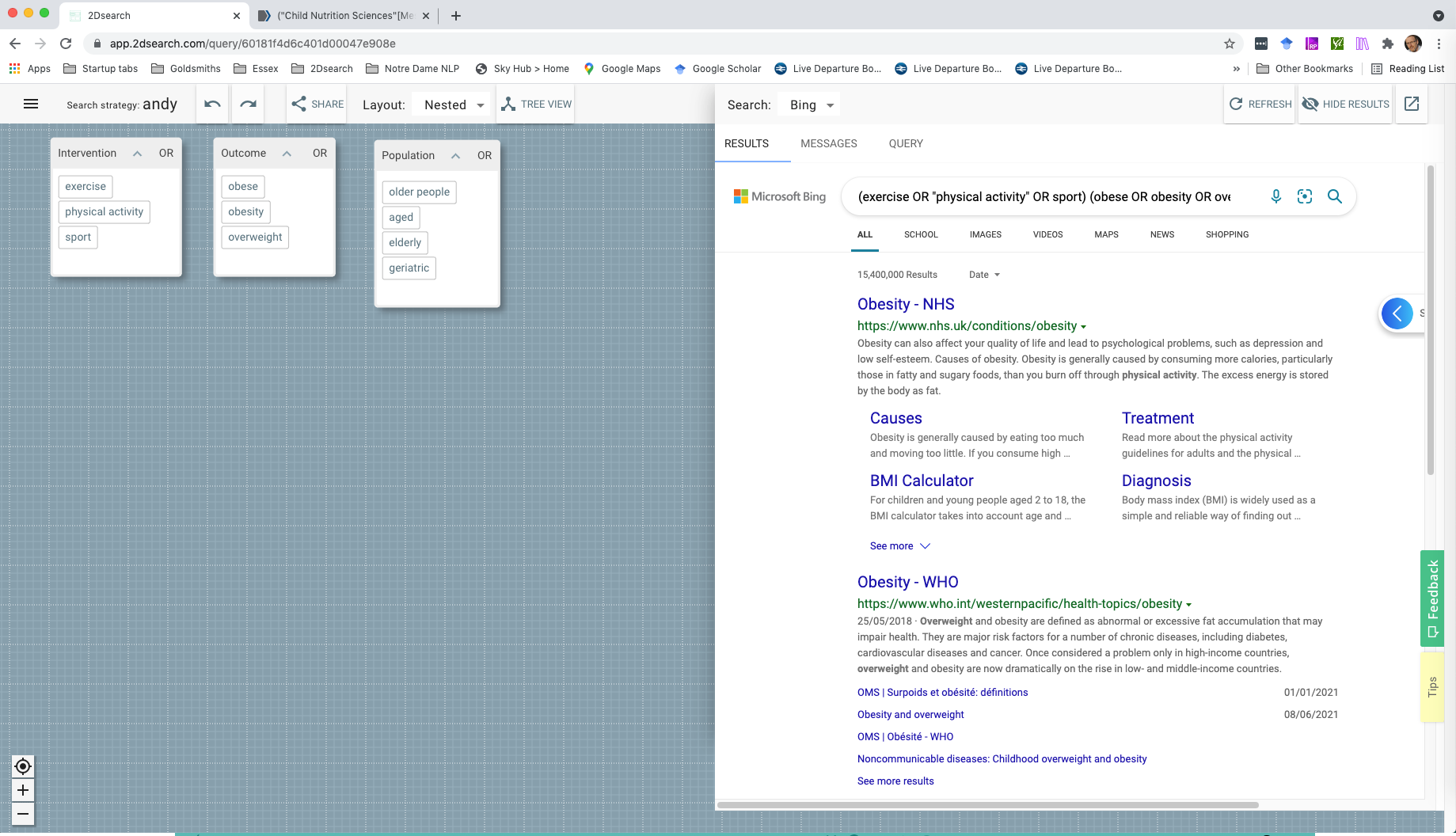Translating search strategies: a universal language for information needs
In this video we learn how to automatically translate search strategies to the syntax of different databases.
Let’s start with a simple search strategy that finds documents on the use of exercise to prevent obesity in older people:
As you can see, this search strategy is currently retrieving documents from Bing, but other databases are available. What’s more, if we change to a different database, the search string is mapped automatically to the correct syntax for that database.
We can see this for ourselves if we look under the query tab, where we see our query mapped automatically to the syntax for Bing. So if we change to a different database, the search string is again mapped automatically to the correct syntax for that database.
But what happens if the database you want its not listed in the search menu? This is where Polyglot’s automatic syntax translations come in.
If you look under the query tab for PubMed, you will see a list of translations for many popular databases, such as Ovid, Web of Science, Scopus, and many more. These translations are particularly valuable for complex search strategies such as this one, where manual translation would be tedious and error prone. When you see the translation you want, you can simply copy and paste it into the search engine of your choice.
What this means is that with 2Dsearch you need create your search strategy only once, and benefit from automatic translation to the syntax of whichever database you choose. So you can spend more time optimising your search, and less time worrying about how to translate it for different databases.

